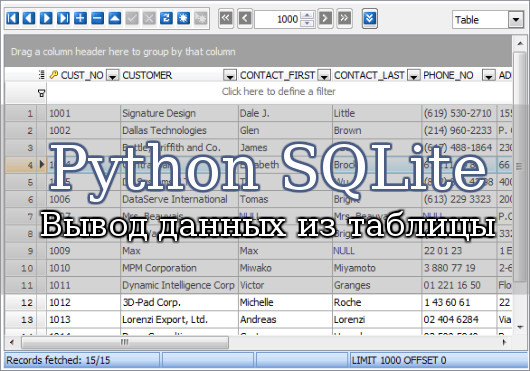

This is pretty straightforward, but the affinities make it slightly tricky to understand. Other numbers without decimals are often used with the integer. Essentially, real is used for numeric data with a decimal component, such as floating point numbers. Since real and numeric data types overlap quite a bit, it is best to offer some clarifications so they can be used correctly. Therefore, there will be no attempts to convert one data type to another, and it will remain as it is. None: If you use None, no storage class will have any precedence.Real: This is similar to integers, except it converts regular integers into floating-point values.Integer: This works very similarly to Numeric, but the cast expression causes differences to arise.Numeric: This is great if you want an affinity type that can store all five storage classes.Text: This stores data that holds null, text, or blob values.The main purpose is to maximize compatibility between SQLite and other databases.Īffinity types in SQLite include the following: The data types mentioned above may also be referred to as storage classes.Ī subdivision of these is affinity types, a preferred storage class designed for a column. It is worthwhile to discuss affinity types while we discuss data types. These are numbers, both positive and negative, that also have decimal values. Real: The integer data type only caters to whole numbers, so the real data type is used for floating point values.The number of bytes used to store data depends on how big the value is. All positive and negative whole numbers may be stored, including zero. Integer: This is used for all integer values.In most cases, strings are stored using common database encodings such as UTF-8, UTF-16BE, or UTF-16LE. Text: This is used for all strings that need to be saved these can be of any length as long as it is within the maximum storage capacity devised by your version of SQLite.

It is best to opt for null when you want to store nothing because spaces or carriage returns all have their ASCII values and are considered independent characters by the system. Null: As the name suggests, this is meant for null values.It is stored as it was input with no alterations. Blob: The data stored in a blob can be considered dynamic.To store and manipulate it correctly, you should be familiar with each of the following: There are multiple data types that you will find in SQLite. If you stored a number in a text data type and intended to add numbers, you’d end up with characters and vice versa.Īs a result, it is crucial to have a good understanding of the data types in SQLite and the correct way to use them. This displays the importance of data types while creating functions or even within columns of a table. In the same way, if you were to store the number 65 in a character variable, A would be stored, and adding one would make the value 66, which corresponds to the letter B. If you stored the letter A as a character and added 1 to it, it would increment the ASCII value and return B. For example, if you are storing text in a variable, adding a certain number would increase the ASCII value of the character and return a new one. This is crucial as the manipulation of data is going to be based on the data stored. The main purpose of a data type is to tell the system what kind of data will be stored within a variable. Importance of Data Typesĭata types are directly linked to the variables needed to define specific data sets within a procedure or function. To begin creating complex queries through procedures and functions in SQLite, we must know the different data types to avoid any loss or incorrect data manipulation.


 0 kommentar(er)
0 kommentar(er)
